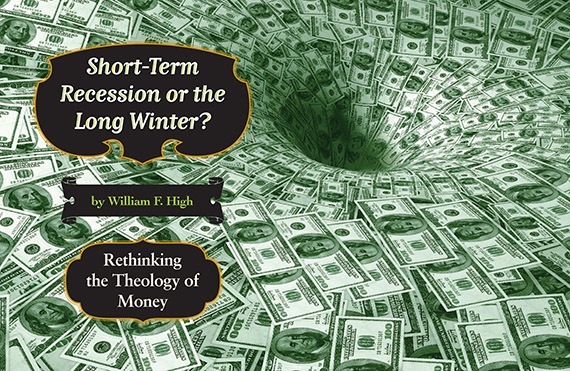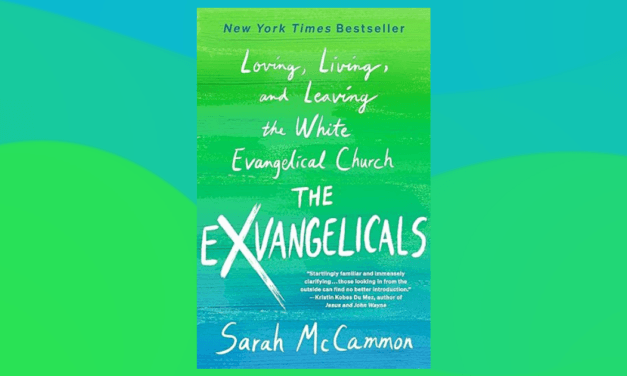This article first appeared in the CHRISTIAN RESEARCH JOURNAL, volume 36, number 06 (2013). The full text of this article in PDF format can be obtained by clicking here. For further information or to subscribe to the CHRISTIAN RESEARCH JOURNAL go to: http://www.equip.org/christian-research-journal/
SYNOPSIS
The current economic climate and a resulting drop in giving have caused Christians to pull back and reexamine their views on the financial support of ministry. The recession has also led many to question whether this is a temporary blip or a long-term pattern.
In the past fifty years, the American church arguably has witnessed some of the most dramatic culture shifts in history. The church has responded with many innovations, ranging from house churches to community churches, seeker churches, and megachurches—not to mention a wide variety of theological variations.
However, we’ve not seen the same kind of adjustments in the theology of money. In many instances the Sunday morning service in the local church still consists of “three hymns, a message, and pass the offering plate.” Or, in the nonprofit world, it’s “Send out the support letter, and ask donors for money.”
These approaches point to a shortfall in the church’s theology of money. It should not merely be about giving ten percent and then you’re done. These approaches also ignore the daunting demographic, social, and political factors staring the church in the face. It is time for Christian leaders, thinkers, theologians, and the general populace to rethink our theology and practice of money in new and profound ways.
Frank was in his late sixties and just about ready for his third career when I met him. He’d been a successful airline pilot. From there, he founded a business that soon became one of the dominant courier companies in the area. That success prompted his next career: philanthropist.
After finding Christ in his thirties, Frank became a faithful tither, but by the time he reached his sixties he realized that he actually had more than enough to live on. With that recognition—that he had enough stuff—Frank set out to give away his wealth. He began to reach into his net worth—giving away his real estate, his business, and even contributing from his IRAs. He blew past tithing and found himself giving more than fifty percent of his income in a single year.
Frank is nearing his seventy-seventh birthday, and he intends to give away his remaining wealth before he dies. Frank’s story can be contrasted with Steve, a forty-something Boomer. Steve was a hard-driving business owner. He was on his second marriage and struggling in his faith. He admitted to having put his business first and sacrificing his family in favor of money. On December 31, he called me and insisted that we meet some time during the day.
When I met Steve at a restaurant that day, he told me that he’d been up most of the night crying. He’d made the decision to make the first and single biggest gift of his life. And he pushed across the table a plain white envelope that contained a six-figure check, which represented a good chunk of his avarice.
Frank represents one of the greatest generations that formed the backbone of the country in terms of work ethic, moral values, and generosity. Behind that generation stand the Boomers—people like Steve who are more uncertain about their values and their giving. What happens when Frank’s generation is gone?
In this current economic downturn, many churches and charities across the country are hurting. Giving is generally down. In 2008, giving by individuals fell 2.7 percent and giving by corporations dropped 4.5 percent. While religious charities have fared better than most, a December 2008 study conducted by Barna indicated that one out of every five households (twenty percent) had decreased their giving to churches or religious centers. Moreover, as many as thirty-one percent had decreased their giving to nonprofits.1
The question on the minds of many is whether this is a temporary cyclical phenomenon or a long-term trend. There are troubling cracks on the horizon that suggest this is more than a temporary freeze.
FOUR KEY FACTORS INFLUENCING GIVING
When the economic downturn first hit, many in the charity world comforted themselves with the fact that religious giving remains steady during a recession. On the other hand, most conceded that the crash of 2008 was no ordinary recession. Accordingly, the crash of 2008 caused many to look with a skeptical eye to the future of giving. There are four factors that the suggestion of a long winter should cause us to ponder.
Factor No. 1: A Theology of Money
One of the first factors influencing ministry support today is the church’s own theology of giving. The early church was a group of people whose anticipation of the coming kingdom dynamically affected their living and giving.
This anticipation caused people to live mindfully of that day. The apostle Paul helped drive home the message: “For we must all appear before the judgment seat of Christ, that each one may receive what is due him for the things done while in the body, whether good or bad” (2 Cor. 5:10 NIV). The impact of living in light of eternity caused believers to hold loosely their worldly possessions. They treated their property as not their own, but rather to be used for the common good of the church.
As the years passed, the coming kingdom seemed less imminent. With less immediacy, the ownership message was lost. People could hold on to their possessions because the kingdom did not seem so near. The church’s teaching helped to reinforce this ownership perspective. Many churches taught that giving was simply defined as a tithe. “Give ten percent and you have arrived” was the message. Defining “giving” as only a tithe meant that the remaining ninety percent was yours to use as you pleased.
I suspect the church has not fully realized how deeply ingrained this tithe message became. Not long ago, at a Generous Giving Conference (www.generousgiving.org), a young businessman came up to me and related how his business was growing by leaps and bounds. He described how he was a faithful tither, but after he reached ten percent, he had proceeded to buy second homes, cars, airplanes, and more with “his ninety percent.” He related with some frustration that before that conference, he had never heard of people giving more than ten percent, let alone ninety percent of their income.
In reality, Scripture has always been clear that God is the owner of everything: “The earth is the Lord’s, and everything in it, the world, and all who live in it” (Ps. 24:1 NIV).
In recognizing God’s ownership, there are clear implications. First, even if I give ten percent, I’m still accountable to God for the remaining ninety percent. Second, because I ultimately will not keep anything I own, I should use all the resources God has entrusted to me for eternal purposes. It is time to return to a biblical theology of giving, particularly in light of the upcoming demographic trends.
Factor No. 2: Demographic Trends
If we step away from theology, we can see clear demographic trends influencing giving in the coming years. Every twenty years a new generation is created. The number of people within that generation affects how much buying, selling, and giving will take place. Demographics provide reliable predictors of behavior.
The War Generations. The GI Generation, born between 1905 and 1924, is the oldest living generation in the country. The GI Generation numbered 70.4 million people. It is also one of the wealthiest generations, with nearly eleven trillion dollars of wealth.2
The GI Generation was followed by the Silent Generation. The Silent Generation went through the Korean War. It is the smallest of any of the generations and numbers just 52.5 million people. They were born between 1925 and 1944. The Silents are currently sixty-four to eighty-three years of age.3
These two generations are lumped together as the War Generations. The War Generations shared common experiences—great national pride, prayer for sons at war, and celebration over homecomings. Their basic values can be loosely characterized as faith, freedom, and family.
These generations understood giving their lives and money to a cause. They worked hard, saved diligently, and gave to causes consistent with their values. These generations have been the backbone of some of the country’s oldest ministries, such as Campus Crusade, The Navigators, Wycliffe, New Tribes, and Gospel Missionary Union (now Avant).
The Boomer Generation. The War Generations gave birth to the Boomers. The Boomers number seventy-eight million people and were born between 1945 and 1964. The Boomers might be known as the rebellious generation. Think Woodstock, war protests, sit-ins, love-ins, and the events of the 1960s. The Boomers, perhaps more than any other generation, questioned and challenged the values of the previous generations. Kenneth Gronbach, in The Age Curve, says of the Boomers: “The Boomers wanted to change the world….Forty or so years ago the Boomers wanted to burn down the universities. Now they run them and the transfer of power has been fairly recent.”4
The Boomers are the recipients of the wealth of the prior generations. As one of the largest generations, they are naturally one of the largest consumer generations of all time. On the other hand, with seventy-eight million people, they also have made an incredible demand for services. While the legacy of the Boomers is still being written, it does not appear that it will maintain the generosity of the War Generations.
Generation X. Generation X numbers sixty-nine million people.5 Xers were born between 1965 and 1984. They range in age from twenty-five to forty-four. Xers have grown up with media—TV, video games, the Internet, and MTV. Generation X saw the excess of the 1980s and became disillusioned. The term “Generation X” came from a novel by Douglas Coupland, who depicts three characters who are underemployed, overeducated, wear grunge clothing, and listen to alternative music.
Whereas the Boomers rebelled, Generation X detached itself, and forty percent left the church as they reached adulthood.6
The Millennial Generation. The Millennial Generation (also called Generation Y) represents upcoming opportunity. With a birth date between 1985 and 2004, the Millennials will number approximately one hundred million people. With high divorce rates, they will grow up with, in many cases, two sets of parents and eight grandparents. With such large numbers, the Millennials will be truly a consumer generation. Like the Boomers, they will have to compete and be entrepreneurial.7
Unlike the detachment of the Xers, The Millennials appear to have the promise of being the most cause-oriented. They’ve been faced with a confusing influx of values and ideas from multiple parents, grandparents, and educational institutions. They’ve learned and are learning to sort through the haze for themselves. The promise of the Millennials is that with education and training they may be one of the greatest missions-minded generations in history. On the other hand, if they do not reach their promise then we should ponder the consequences.
The Implications from the Demographics
The demographic trends have significant impact for churches and charities. The War Generations are roughly in the last ten years of their lives. Because they have been such big supporters of many churches and charities, their passing will leave a great void. Many will be skeptical of passing that wealth to their Boomer children and will be encouraged to pass it on to ministries. But the window is short.
The Boomers are pivotal. With seventy-eight million people, they represent a significant giving population. With the median age of the Boomer at fifty, the next ten to fifteen years are critical. As the Boomers contemplate retirement, they will sell their businesses. It is estimated that in the next ten years there will be trillions of dollars of business sales. If even one-tenth of that is captured for Christian causes, there will be billions of dollars available for ministry.
But as the Boomers retire, their income will go down. Consequently, as their giving goes down, churches and ministries will likely see a decrease in their own giving. The Xers will replace the Boomers, but with nine million fewer Xers, there will be an inevitable drop in giving.
Factor No. 3: Social Trends
The aging Boomer population will begin to place pressure on our society in profound ways. From a pure numbers standpoint, we’ll have seventy-eight million Boomers heading for the Social Security lines. Social Security is an unfunded mandate, meaning that the federal government requires the benefits to be paid without providing the appropriations to foot the bill. Social Security is funded by a tax on workers. Fewer workers means lower tax revenue, and we cannot look to Generation X to make up the difference because there are nine million less of them.
The Boomers will place pressure on the system in other ways as well. Because of advances in medical technology, Boomers will live longer. As Boomers live longer, they will require more care.8 The burden of care is highlighted by the fact that the United States will face a twenty-nine percent shortage of doctors by the year 2020, and a shortage of one million nurses in the same time span.9 That care will include not just medical but also social needs of this aging population. Who will provide that care? Churches and local ministries will likely provide this care, and on a shrinking budget, because some of their best givers will have retired.10
Factor No. 4: Political Trends
The demographic and social trends will push, if not drive, the political trends at work. As the Boomers place increasing demand on Social Security, Medicare, and Medicaid, the government will be forced to find ways to pay for these entitlements.11 These unfunded entitlements amount to $500 billion per year.12
Like the eighty million Boomers who are looking to the sixty-nine million Xers to support them, the government will be looking to the sixty-nine million Xers to help pay the tax bill. The government will be forced to raise taxes to pay the bills at every level. More tax will equate to less disposable income and less giving.
Even now, the government has been hungrily looking for revenue by reducing the allowable deduction for charitable contributions. Currently, charitable giving in the country amounts to $300 billion of annual giving. While it may seem foolish to look at a $300 billion pie to solve a multi-trillion-dollar problem, that is precisely what some are proposing. Clearly, there is no logic to cutting charitable deductions when in fact it will be churches and ministries who will be called upon to provide care for those in need.
HOW SHOULD THE CHRISTIAN COMMUNITY RESPOND?
In every age, there are many urgent prophetic calls. This article is not one of those urgent appeals.
To the contrary, the appeal here is to the Christian community, Christian leaders, and Christian thinkers to look at the facts. Don’t sensationalize them. Just look at them and take rational action.
The facts tell us that we’ve fallen short in our teaching and theology of money. The facts tell us that the largest givers in our history are heading toward death and retirement and will be replaced by a generation of nongivers. The facts tell us that the current social and political climates don’t bode well for giving. How must we respond?
A Return to Proper Theology
A return to a proper theology of money and giving is in order. We need to preach once again that everything belongs to God. Giving is not simply a math calculation—let alone a ten-percent calculation. If everything belongs to God, then a simple percentage may not suffice. Giving may extend to the Acts 2 kind of giving—out of net worth and possessions.
Just as in the early church, where giving was in the open, we need to be open in our teaching and preaching on money. There’s little doubt that financial issues are central to the lives of people today and thus so should be our teaching.
Reach the Coming Generations
Jesus urged His followers to read the signs of the times. Those signs tell us that Generation X is not currently a giving generation. Right behind them are the Millennials, which may number one hundred million people. While the Millennials hold significant potential, it is clear that they are still in formation on their beliefs and habits.
One clear call to action is to make sure that we reach the upcoming generations with a clear biblical stewardship message. In the past, biblical stewardship teaching was kept to a minimum or even avoided. If there was ever a time for teaching on biblical stewardship, now is the time.
Thinking About Money, Giving, and Givers in New Ways
As culture has changed, the church has done much to respond to those cultural shifts. On the other hand, despite those shifts, we currently have an antiquated view of money and finance. This outdated view dominates in the face of huge demographic, social, and political factors that cry out for new ways of thinking.
In the past, to speak about giving attention to a major donor might prompt a rebuke from James 2 about the prohibition of giving special attention to “one wearing fine clothes.” But James 2 speaks about showing partiality or favoring the rich compared to the poor. That passage should be balanced with Paul’s teaching to “instruct those who are rich in this present not to be conceited or to fix their hope on the uncertainty of riches, but on God, who richly supplies us with all things to enjoy. Instruct them to do good, to be rich in good works, to be generous and ready to share” (1 Tim. 6:17–18 NASB).
In this case, we have a demographic fact that the War Generations will pass at least in the next ten to fifteen years. Without prompting, many of them will give to secular hospitals and universities. Unless the church reaches out to these generations, it will lose the opportunity to receive these gifts and inadvertently help fund causes neutral (or at times even opposed) to the cause of Christ. It is time to pay attention to these relationships from an instructional and stewardship standpoint.
Thinking About Endowments in New Ways
Just as with major givers, many ministries have steered clear of endowments. They’ve done so on the basis that they were not acting in “faith” if they had a reserve fund. Generally, an endowment maintains a principal balance but provides income generated from the principal to the ministry.
However, I believe that the instruction for the ministry world is to heed the signs. Wealth transfer will occur, so we should capture it. In Genesis, Joseph used the seven years of prosperity to store up wealth for the coming lean years.
Certainly, we know that the secular world is aggressively pursuing this endowment strategy. Notwithstanding the current economic conditions, it is anticipated that as much as $41 trillion will change hands by the year 2050.13 The use of foundations and endowments becomes a matter of wisdom.
Considering New Forms of Gifting
Today, at least eighty percent of all giving occurs in the form of cash; this occurs despite the fact that over ninety percent of this country’s wealth is held in noncash assets. It’s unclear how the teaching of the modern church came to limit giving primarily to cash giving.
In Acts 4:34, the early church was marked by gifts of land and houses. Scripture places no prohibition on types of gifts. Notably, the secular world has not limited itself only to cash giving. For instance, in 2006 (the last full year of available data), there were over $500 million worth of cars given and nearly $2 billion of real estate.14
In short, it’s time to rethink our theology, not just on giving, but on what should and can be given. This issue is particularly true given the large number of upcoming estate transfers that will occur in the next ten years as the War Generations pass away.
Considering Enterprise Funding
Finally, it’s time to rethink how we fund the work of the gospel. The traditional notion of “three hymns, a message, and pass the offering plate” is not a prescribed biblical model. It’s something that we’ve come to accept, however.
As people pursue creative gifting, an interesting trend is developing: between 1977 and 1997, forty-seven percent of revenue growth for nonprofits came from fee income—not contributions.15
Business is part of the new byword of ministry funding. To illustrate, three businessmen combined to purchase a prime piece of development ground for a Christian school. They are now selling off outparcels to retail businesses. The profits from the outparcels are going directly to the school. Additionally, they are now working on a plan where one of those retail businesses will be owned by the charity, and the profits from the business will go directly into the school. A side bonus is that many of the workers for the business can come from the Christian school.
A FINAL WORD
The current recession has pointed to significant cracks in the giving landscape of churches and ministries. Perhaps more significantly, those cracks point to a theology of money that is antiquated or misguided. In some cases, this improper theology of money has artificially caused people to limit their giving.
The demographic, social, and political factors staring us in the face cannot be ignored. It is time to rethink our theology of money. How we do that rethinking may do much to determine whether we are in a short-term recession or if we are in for the long winter.
While it’s clear that the work of the gospel of Jesus Christ will go on regardless, it’s encouraging to think that we might speed up that work by capturing the billions of dollars that will become available in the next few years.
William F. High is the president/general counsel of the Servant Christian Community Foundation (www.servantchristian.com). He may be reached at [email protected]. Servant Christian’s mission is to inspire, teach, and facilitate revolutionary biblical generosity. They work with givers, ministries, and financial advisors to help increase giving using cash and noncash assets.
NOTES
- “Churches Stand to Lose Several Billion Dollars in Lost Donations Due to Economic Downturn,” December 1, 2008, http://www.barna.org/barna-update/article/20-donorscause/9-churches-stand-to-lose-several-billion-dollars-in-lost-donations-due-to-economic-downturn.
- Kenneth Gronbach, The Age Curve (New York: Amacon, 2008), 11–12.
- Ibid., 13.
- Ibid., 14.
- Ibid., 15.
- Generation X and Millennials Fact Sheet (www.biblica.com/bibles/tniv/pdf/GenerationalFactSheet).
- Gronbach, 16–17.
- Verne Sedlacek, “The Pig in the Python, and Other Reports from the Front Lines of Demography,” Mission Matters (Spring/Summer 2008), 7.
- Ibid.
- Ibid.
- Gronbach, 257.
- Michael Strauss, “World Portrait by the Numbers,” Mission Matters (Spring/Summer 2008), 9.
- Sedlacek, 7.
- Pearson Liddell and Janette Wilson, “Individual Non Cash Contributions, 2006,” Statistics of Income Bulletin, Summer 2009.
- Sharon M. Oster, Cynthia W. Massarsky, and Samantha L. Beinhacker, eds., Generating and Sustaining Nonprofit Earned Income: A Guide to Successful Enterprise Strategies (San Francisco: Jossey Bass, 2004), xv.









